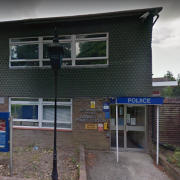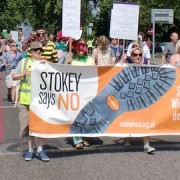Tower Hamlets council has declared its backing for the independent commission which is to look into plans for the so-called ‘super sewer’ under the Thames.
“I understand the urgent need to upgrade London’s sewer system,” said Tower Hamlets Mayor Lutfur Rahman. “But we have limited open space in this very urban borough. So we are exploring alternatives to minimise the impact the tunnelling works will have.”
The Thames Tunnel Commission was set up last month by Hammersmith and Fulham council and is now being supported by local authorities along the river, from Southwark to Richmond.
Lord Selborne, the chairman, said: “I welcome the opportunity to pose the questions that millions of water bill payers are starting to ask. The key question is whether this multi-billion pound project is the best solution to making the Thames cleaner or whether there are sensible alternatives that are cheaper, greener and less disruptive.”
When the Commission was launched a month ago, Stephen Greenhalgh, the leader of Hammersmith and Fulham, said: “Doing nothing is not an option, but we need to consider the possibility that there are better alternatives.It remains my view that an alternative hybrid scheme, involving a shorter tunnel, diversion of run-off rainwater and sustainable drainage as well as improved river water treatment should be revisited as a matter of urgency.”
Councils opposing the sewer say London should follow the example of somewhere like Chicago, which is adopting a policy of ‘sustainable storm water management’ in which rainwater is directed back into the earth through devices such as ‘permeable pavements’ as described in this BBC film. According to another BBC report, residents of another American city, Milwaukee, have complained that their ‘super sewer’ – highlighted by Thames Water as a example of what it is planning – has not prevented persistent flooding.
Residents of Shadwell will welcome the move. They have been campaigning against the building of a 90 foot ventilation shaft at Shadwell’s King Edward Memorial Park.
Local residents from SaveKEMP told ELL that the overflow shaft would close the Thames path, replace green space, and require a busy access route for vehicles through a wildflower area. The site would be in use for at least three and a half years, and leave permanent ventilation structures standing in the area.
The alternative plans put forward by the group would relocate the works to the nearby Heckford Road building estate. Nick Tennant, Communications Manager for the Thames Tunnel project, talking to EastLondonLines, argued that the Heckford Street alternative offered by SaveKEMP would cause greater disruption to the local area as a whole.
He said: “Using the foreshore was our preferred option and still is our preferred option.” He also said that campaigners have overlooked people residing close to the Heckford estate: “We need to give the Heckford Street community an opportunity to have their say.”
Local campaigner, Rose Ades, is concerned that the debate should not get bogged down into a row about where the sewer work should go rather than addressing the larger question of whether the sewer is the best solution for London’s problems.
She told ELL: “A tunnel does nothing to improve sustainability. If you build inland people complain. Losing parkland for a period of seven years means a whole childhood with nowhere to play. But if you put it on the foreshore you damage flood defences and fish migration patterns.
‘’The trouble is that Thames Water prefer a big new tunnel rather than looking at improving existing systems. A new tunnel is a big asset that looks good on their balance sheet. Part of the reason things have got worse is that so many people have concreted over the front gardens.
‘’There is nowhere for water to soak in so it runs off – into the river. There isn’t enough capacity in the system but capacity could be greatly improved if they made local improvements to pumping stations and if all future building had to be made environmentally sustainable – with green walls and roofs.”
The Commission will be made up of experts including representatives from the Consumer Council for Water, engineers and the US-based National Resources Defence Council.





